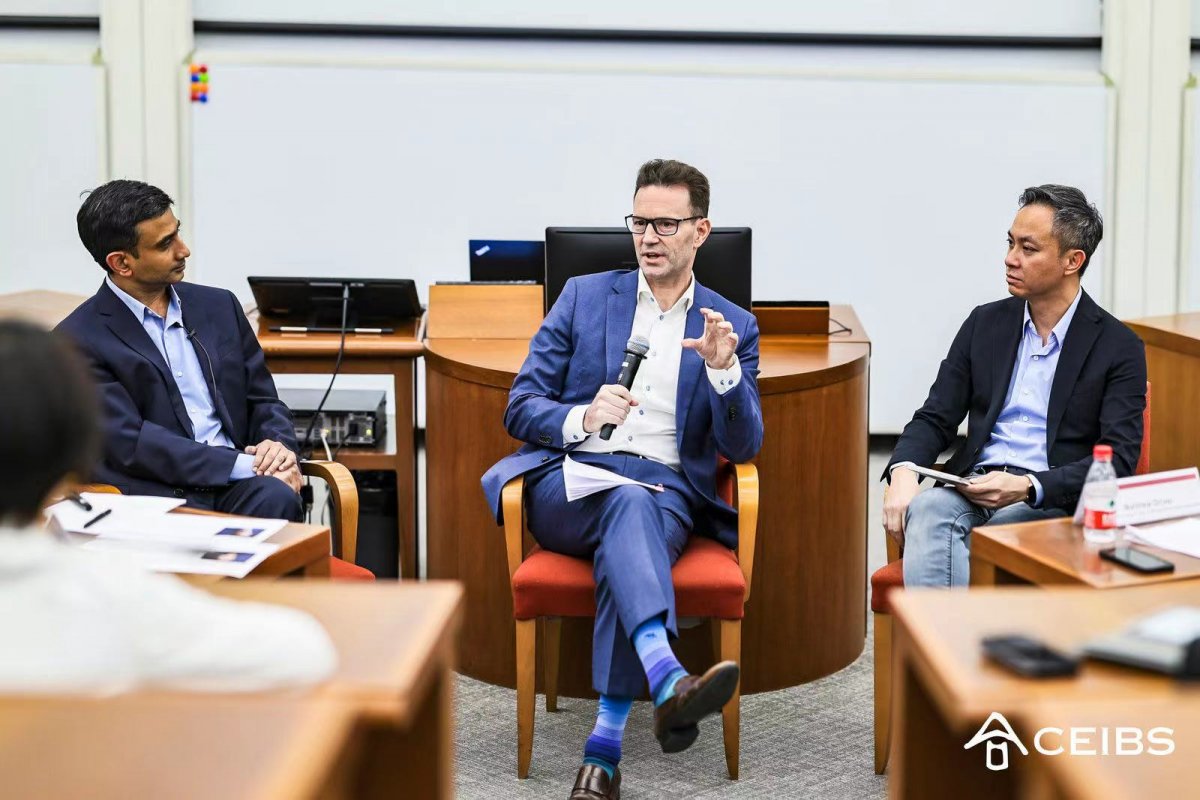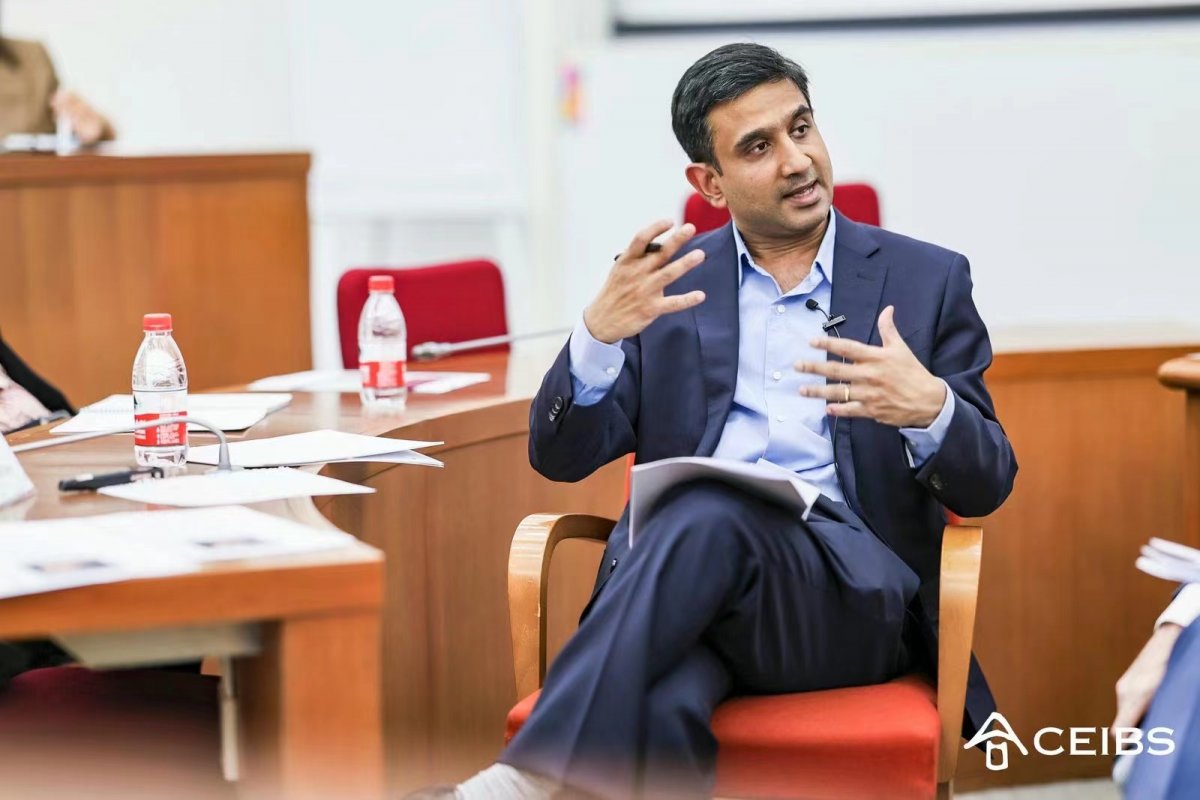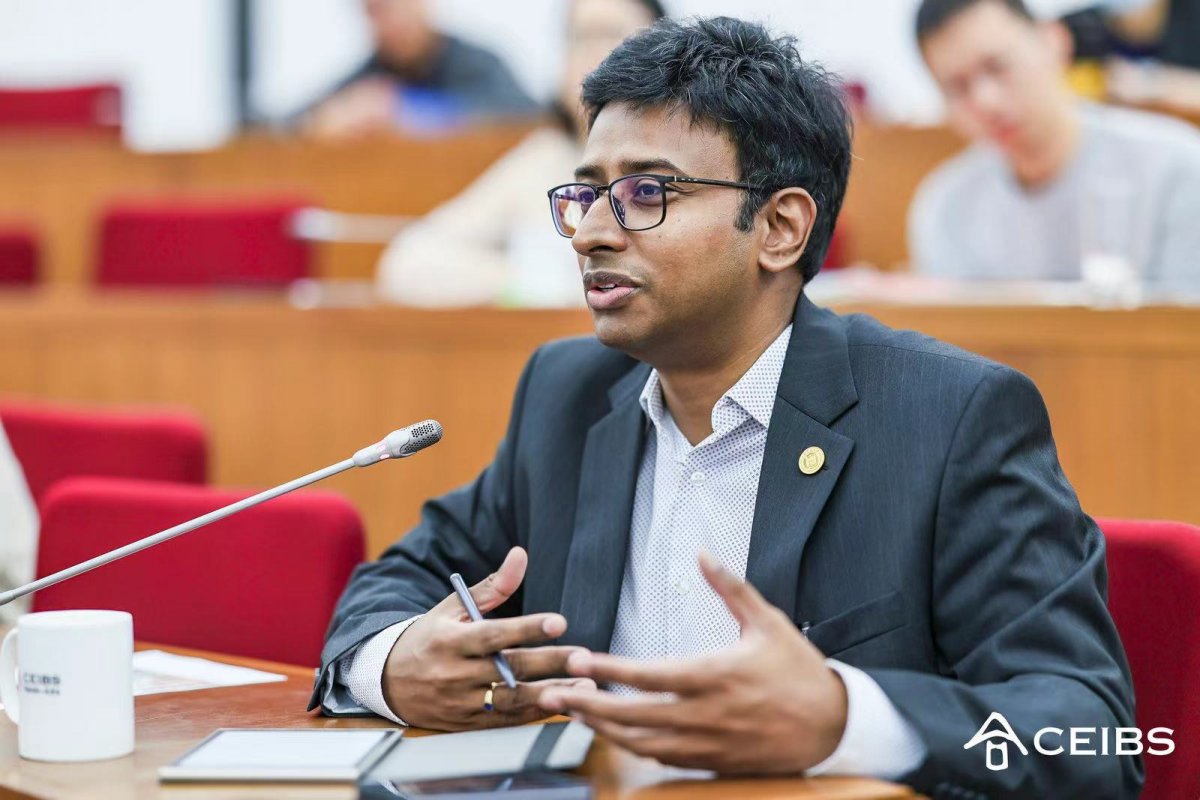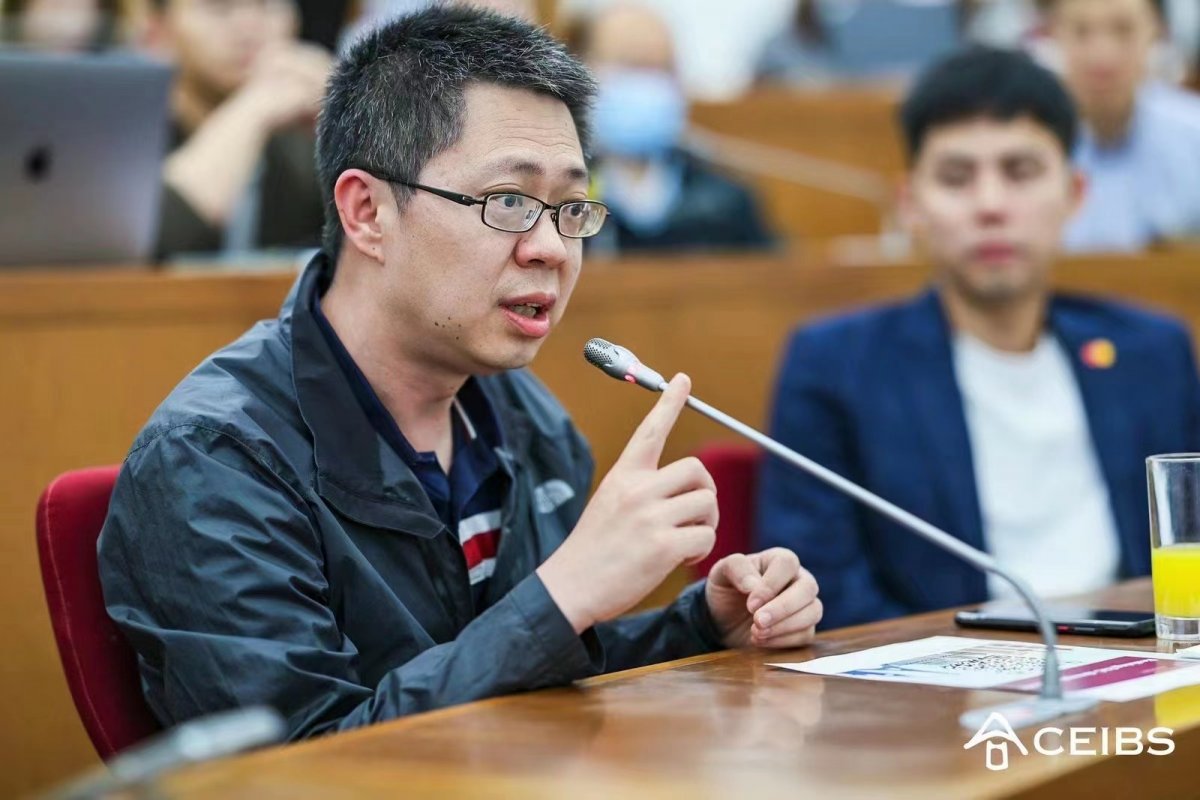Payments as a Force for Good – Mastercard Execs Outline their Evolving ESG Strategy
May 22, 2023, Shanghai – Environmental, social, and corporate governance (ESG) has gone beyond simply being a well-meaning catchphrase or token effort utilised by big companies to distract from their unsustainable past or present. Instead, ESG is now a lynchpin for formulating long-term, sustainable growth strategies that empower both their implementers and their direct consumers.
This was the message delivered at CEIBS Shanghai Campus today by two leading executives from Mastercard, a global payments technology company that has branched out into various emerging tech areas, including AI, blockchain and advanced data analytics, all with a strong ESG presence in mind.
As part of the CEIBS Beyond Charity Series, CEIBS Professor of International Business and Strategy, Shameen Prashantham was joined by Matthew Driver, Executive Vice President and the Head of Mastercard Services in Asia Pacific, and Donald Ong, Senior Vice President and the Head of Mastercard Data & Services in Asia Pacific for a fireside chat on how Mastercard views ESG in modern business practice, and how it builds its products and services with an ESG-centric approach, making it easier for their customers to contribute to ESG through payments.
“In terms of the purpose of ESG, powering economies and empowering people is where we start from. We want to create a diverse, sustainable digital future for everyone,” Mr. Driver began, highlighting Mastercard’s sense of responsibility to “lead with decency,” while inspiring others to do the same.
“We recognise that we have a role to play in facilitating this, and we want to utilise the breadth of our network to not only influence change but also to convene change,” he continued.
As for Mastercard’s specific ESG ambitions, Mr. Driver and Mr. Ong outlined how their approach sits at the intersection of ‘People, Prosperity, and Planet’.
People: By driving diversity, equity, and inclusion, Mastercard’s employees can unlock their full potential across both live and work. Employees thrive when they feel a sense of belonging, are valued, and treated fairly. Furthermore, Mastercard’s compensation model is linked to its ESG goals on carbon neutrality, financial inclusion and gender pay parity where all employees share equal accountability and success.
Prosperity: Empowering people means accelerating financial inclusion across the world, enabling fair and easy access to financial systems and services. Mastercard aims to bring an additional 1 billion people into the digital economy by 2025, and digitize 50 million small businesses with a focus on women and minority-led companies.
Planet: Mastercard is driving down its own carbon footprint, while also acting as a convening force for larger, more collective actions regarding ecological sustainability. It is the first in the payments industry to pledge to reach net zero by 2040, and also the first to require the removal of first-use PVC plastics from payment cards on its network by 2028. In addition, the company is also working with its partners on sustainable solutions such as the Mastercard Carbon Calculator which allows consumers to track their personal carbon footprint based on spend with practical suggestions on how they can make a difference via donations, taking public transits or using their loyalty points to plant trees, and the Mastercard’s Priceless Planet Coalition which aims to restore over 100 million trees by 2025 with the support of over 140 program partners.
“In a global ecosystem, a payments brand like us only thrives when economies around the world thrive, and that only happens when growth is inclusive and sustainable,” Mr. Ong explained as he connected the “what” of Mastercard’s ESG strategy to the “why”. “Mastercard’s reach is unique, and we can have the biggest impact by activating our global network of more than 100 million merchants as well as our customers and banking partners with over 3 billion cards in circulation. The key is to drive this imperative with scale, and in a thoughtful manner.”
Adding to that point, Mr. Driver said, “When it comes to restoring trees, you can’t just dig holes in the ground and plant trees in them. You must be strategically mindful of the whole conservation agenda, and be guided by the experts about where, how, when and what to plant. This is why we’ve carefully identified 18 restoration areas globally as part of the Priceless Planet Coalition, including a partnership with China’s Forestry Bureaus to restore forest ecosystems through nearly half a million of mangrove restoration in the Hainan province, which will help protect biodiversity, safeguard ecosystem services, and increase climate resilience for nature and local communities.”
Both executives then explained how China is an increasingly important part of Mastercard’s ESG strategy, as knowledge and expertise flows related to ESG are headed in both directions. They cited how the winning team of Mastercard’s latest Olympics Award, an internal competition on the best Mastercard Data and Services project, was an ESG project from China.
“There’s a huge amount of creativity and resourcefulness here. There’s extensive capacity for innovation. As a network business, we want to bring the best of our network’s ESG ideas to China, and also export the best of what China has to the world” Mr. Driver said.
In closing, Prof. Prashantham encouraged the audience to always consider that stakeholder interests in ESG are complementary, not conflicting. Even for a company as globalised and interconnected as Mastercard, it is possible to construct ESG-related project and business practices that consumers will respond to positively, facilitating genuinely sustainable growth for everyone involved.






















